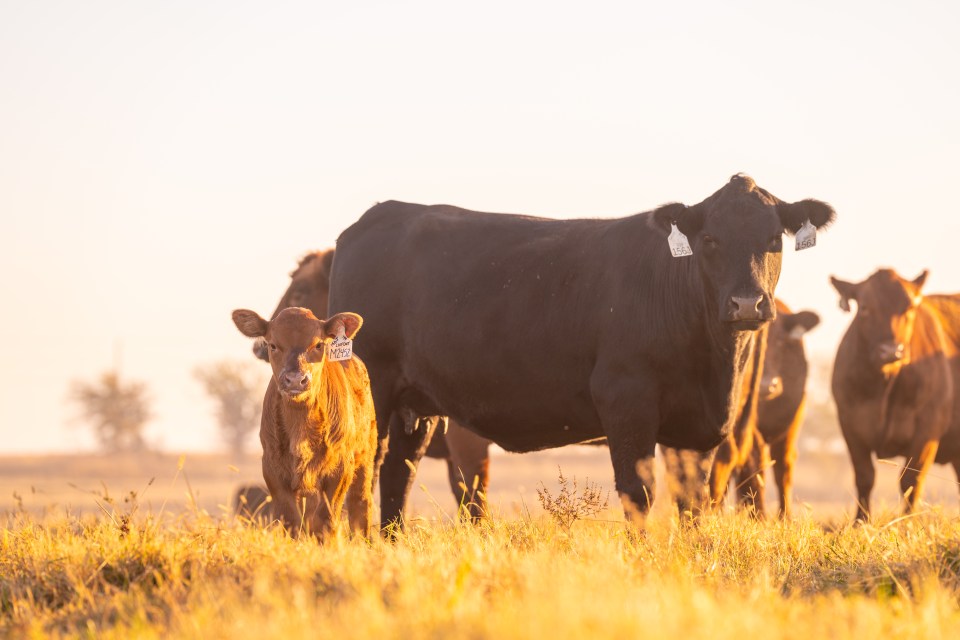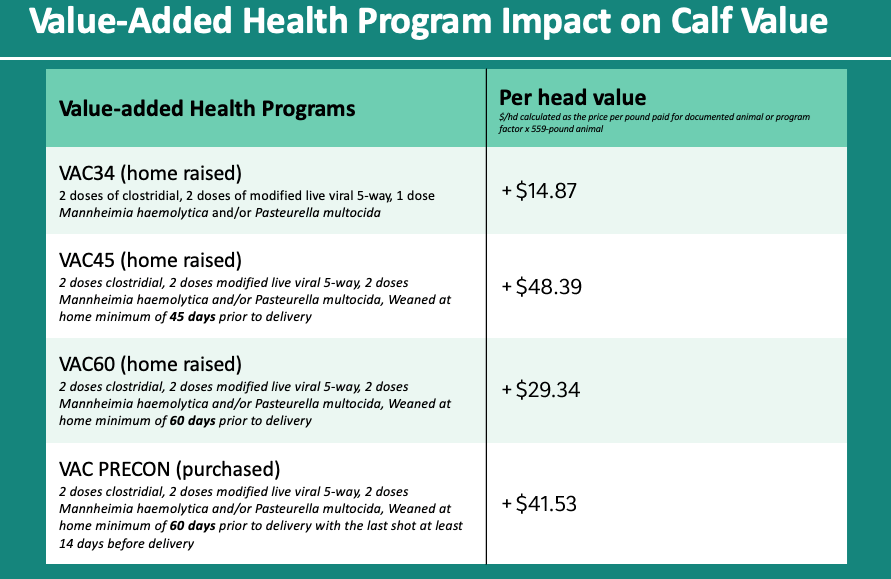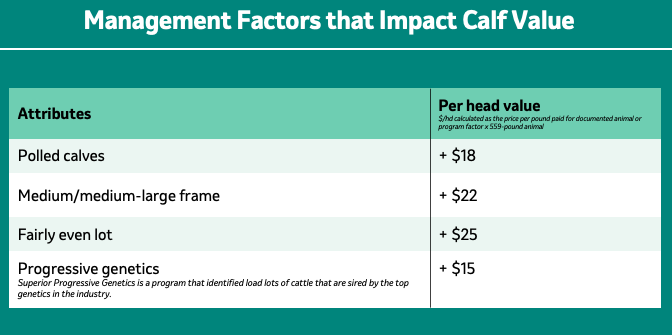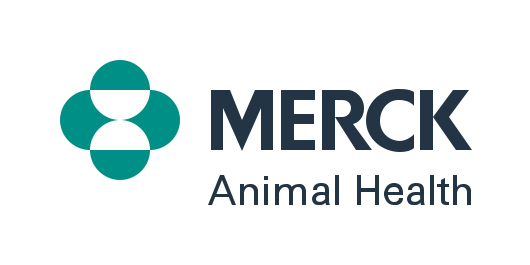How to add value to weaned calves at auction
By Dr. John Hutcheson
Calf prices are at historic highs, presenting you with a prime opportunity to maximize your revenue. But how can you ensure you get the most out of your calves at sale? New data reveals that focusing on the health and development of weaned calves through strategic management and preconditioning programs can significantly boost sales price.
Merck Animal Health, Superior Livestock Auction and Kansas State University have partnered to evaluate the management decisions, programs, and health protocols that drive the price per pound paid by buyers. The 2024 dataset includes information from 851,181 calves with an average weight of 572 pounds.1 The average price nationally was $2.94 per pound, which was 90% higher than the national average price in 2019.
Each trait was evaluated relative to a base with all other factors being constant. So, an additive approach can be used when evaluating multiple traits.

VAC45 added $48 per head
Buyers vote with their dollar on the practices they want to see for weaned calves, and preconditioning is a clear winner. Preconditioning boosts the immune system and increases weight, helping equip weaned calves to thrive in a backgrounder or feedyard phase. A successful preconditioning program relies on a series of vaccinations and management practices, such as weaning, deworming, implanting, and transitioning calves to dry feed, as well as castrating and dehorning.
Preconditioning programs are generally grouped into the following classifications: VAC24, VAC34, VAC45, VAC60 and VAC PRECON. VAC45 calves, that is, those vaccinated with two doses of a clostridial vaccine, two doses of a five-way modified live viral vaccine, and at least one dose of Mannheimia haemolytica and/or Pasteurella multocida vaccine, and weaned at home for 45 days before delivery, added $8.46/cwt compared to those receiving only one dose of each of the three vaccines and weaned at shipping.2
Calves sold on a VAC45 program added $48 per head.

PrimeVAC™ preconditioning programs by Merck Animal Health focus on respiratory and clostridial vaccinations, as well as protection against internal parasites. Programs also include optional implant protocols.
Working with your veterinarian to follow a certified preconditioning program can clarify the steps needed to give calves the best start. You can demonstrate your preconditioning efforts with a certificate at auction and further establish a reputation for selling calves ready for the next step.
Kansas State University and Merck Animal Health have created a resource to help producers evaluate the cost-return of calf vaccination programs.
The implant advantage
Some management decisions do not impact the price paid for calves. Implants are one example. Over the last five years, in nearly 5 million head of cattle evaluated, there has not been a difference in price per pound paid between implanted and non-implanted calves. Nearly 40% of the calves sold in 2024 were not in a program that bans implants.1
Implants consistently increase average daily gain by 20%.3 Calves implanted at 2 months of age and older on average weigh 23 pounds heavier, are more muscular and have a slight increase in frame compared to non-implanted calves.4
Applying calf prices during this period to the additional pounds gained equates to a $66 per head advantage over calves that were not implanted. You can potentially add $115 per head by following a VAC45 program and implanting your calves.
Costs and benefits of value-added programs
Value-added programs may provide an opportunity to set your calves apart at sale and increase revenue. Marketing calves in verified Non-Hormone Treated Cattle (NHTC) programs brought $20 more per head than calves not enrolled in a program. Global Animal Partnership (GAP) program calves sold for $18 more per head.
Unless the premium of marketing your calves in an NHTC type of program outweighs the productivity and efficiency of gains from implants, calves that are destined for finishing and sale to a terminal market should be implanted to capture increased revenue. Consider the cost of participating in these programs when gauging the potential return on investment.
Other factors that deliver value
Selling calves without horns, light-medium flesh and using known bulls with high genetic merit all positively impacted value. Buyers were willing to pay $22 more per head for calves classified as medium to medium-large frame versus small frame. Calves with continental breeding were discounted $10 per head compared to English breeding.
Significant weight variation also impacted price paid per pound. Lots described as very uneven brought $3.29/cwt less than those that were simply described as uneven or were missing a classification. Lots described as fairly even stood to gain an additional $1.14/cwt, a total of $25 per head.
Tighter calving seasons can make a difference in producing uniform calves. A heat synchronization program paired with natural service can shorten your calving interval and get more cows bred earlier in the breeding season. Studies have shown that a single shot of a prostaglandin four or five days after bull turnout can result in heavier, more uniform calves.5

Don’t leave money on the table at auction. Take stock of your current management practices and health protocols that can prompt premiums at sale and consider what you can do to strategically market your calves to increase revenue.
A certified preconditioning program can help you get rewarded for your efforts to produce healthy, high-performing calves that are primed for their future. For more information on the PrimeVac program, talk to your veterinarian or visit PrimeVAC.com.
References
- Superior Livestock Auction Data 2024.
- Glynn T. Tonser. Kansas State University. Evaluation of 2024 Superior Livestock Auction data.
- Merck Animal Health. Technical Bulletin #11. Kentucky Comparative Study with Steers: Revalor®-G (trenbolone acetate and estradiol), Ralgro® (zeranol), Synovex®-S (progesterone/estradiol benzoate) and Control. May 2017.
- Selk, G. Implants for Suckling Steer and Heifer Calves and Potential Replacement Heifers. Symposium Proceedings: Impact of Implants on Performance and Carcass Value of Beef Cattle. 1997. Oklahoma Agricultural Experiment Station. P-957.
- Cushman, RA, Kill, LK, Funston, RN, Mousel, EM, Perry, GA. Heifer calving date positively influences calf weaning weights through six parturitions. J. Anim. Sci. 2013;91:4486-4491.
Find more content for your beef operation.
About the author

John Hutcheson, Ph.D.,
Cattle Technical Services Director
Merck Animal Health
